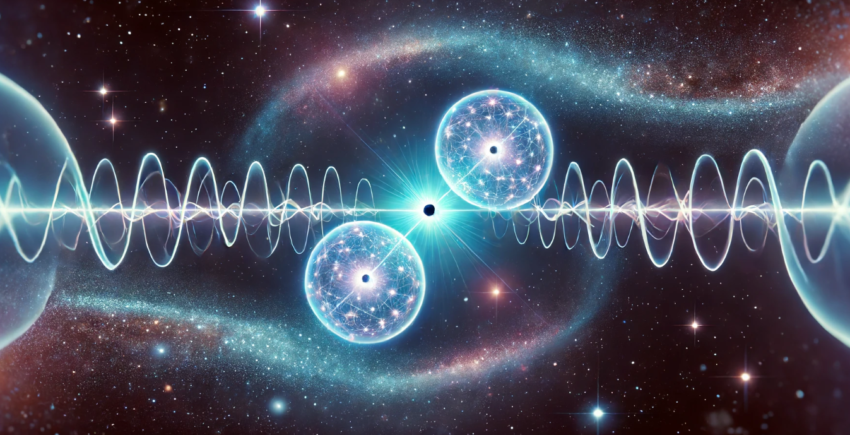| Listen to our audio presentation: Quantum Entanglement |
Quantum entanglement is one of the most fascinating and perplexing phenomena in the realm of quantum mechanics. This phenomenon occurs when pairs or groups of particles become interconnected in such a way that the state of one particle directly influences the state of another, no matter the distance separating them. This concept, famously referred to by Albert Einstein as “spooky action at a distance,” challenges our classical understanding of the universe and has significant implications for various fields, including quantum computing and quantum information theory.
The Basics of Quantum Entanglement
At its core, quantum entanglement involves a relationship between particles that cannot be explained by classical physics. When particles become entangled, their quantum states are linked, meaning the measurement of one particle’s state will instantaneously determine the state of the other particle, regardless of the distance between them. This phenomenon has been experimentally confirmed numerous times, beginning with the groundbreaking experiments by physicists Alain Aspect, John Clauser, and others in the 1970s and 1980s.
Historical Context and Einstein’s Skepticism
Albert Einstein, Boris Podolsky, and Nathan Rosen first articulated the paradox of quantum entanglement in 1935, through a thought experiment now known as the EPR paradox. They argued that quantum mechanics was incomplete, suggesting that “hidden variables” must exist to account for the apparent instantaneous action between entangled particles. However, subsequent experiments have consistently supported the predictions of quantum mechanics, indicating that entanglement is a real and intrinsic property of quantum systems.
Implications for Quantum Computing
Quantum entanglement is a cornerstone for the development of quantum computers. Unlike classical computers that use bits as the smallest unit of information (which can be either 0 or 1), quantum computers use quantum bits or qubits. Qubits can exist in multiple states simultaneously due to superposition, and when entangled, they can perform complex computations at unprecedented speeds. This capability opens up possibilities for solving problems that are currently intractable for classical computers, such as large-scale cryptography, complex optimization problems, and advanced simulations of quantum systems.
Quantum Information and Communication
Beyond computing, quantum entanglement has profound implications for information theory and communication. Quantum teleportation, for instance, relies on entanglement to transmit quantum information from one location to another without physically moving the particles themselves. This process, demonstrated experimentally in the 1990s, involves entangling two particles, sending one of the particles to the desired location, and then using classical communication and the entanglement properties to transfer the information. This technique has potential applications in secure communication systems and quantum networks.
Philosophical and Theoretical Questions
Quantum entanglement also raises numerous philosophical questions about the nature of reality and locality. If entangled particles can affect each other instantaneously over vast distances, this seems to violate the principle of locality, which states that objects are only directly influenced by their immediate surroundings. The resolution of these paradoxes often leads to deeper inquiries into the nature of space, time, and causality.
Future Directions and Research
Research into quantum entanglement continues to advance, with scientists exploring new ways to harness this phenomenon for technological applications. Recent breakthroughs include entangling larger and more complex systems, improving the stability of entangled states, and developing practical quantum communication networks. These advances bring us closer to realizing the full potential of quantum technologies and deepen our understanding of the quantum world.
Resources
- Aspect, A., Dalibard, J., & Roger, G. (1982). Experimental Test of Bell’s Inequalities Using Time-Varying Analyzers. Physical Review Letters, 49(25), 1804-1807.
- Clauser, J. F., & Shimony, A. (1978). Bell’s theorem: experimental tests and implications. Reports on Progress in Physics, 41(12), 1881.
- Einstein, A., Podolsky, B., & Rosen, N. (1935). Can Quantum-Mechanical Description of Physical Reality Be Considered Complete? Physical Review, 47(10), 777-780.
- Nielsen, M. A., & Chuang, I. L. (2010). Quantum Computation and Quantum Information: 10th Anniversary Edition. Cambridge University Press.

